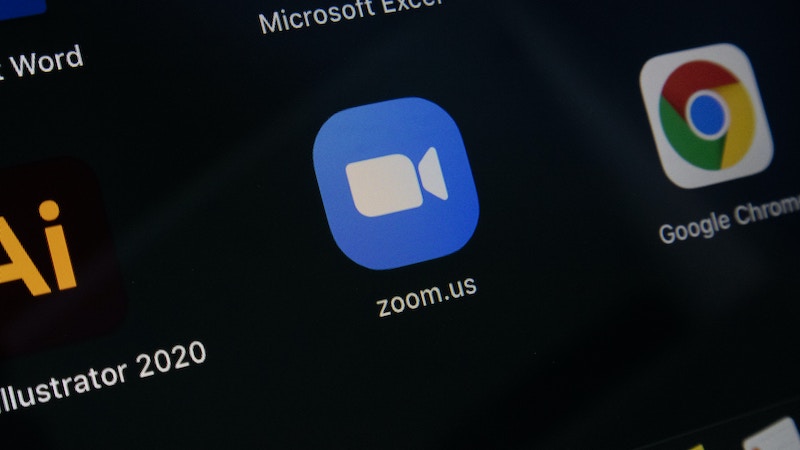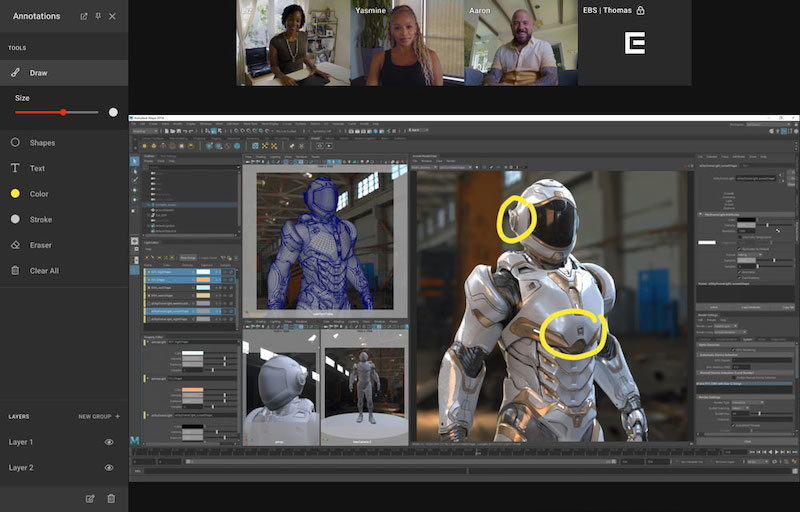Nothing is more frustrating than hopping on an important session with a client or your team only to have Zoom’s screen sharing feature slow down your entire operation.
Your computer’s fan is running a mile a minute, your video is cutting out, and you’re scrambling to assure everyone that these technical difficulties don’t reflect your professionalism.
We’ve been there.
Zoom’s screen sharing feature can lag, sending your sessions out of sync. Fortunately, there are ways to work around these pitfalls. Below, we show you how to tackle that pesky lag problem.
Why is Zoom screen share laggy?
It doesn’t make a lot of sense. Zoom is supposedly built for remote work, though every time you start a virtual meeting, you end up with lots of lag.
The truth is, the platform is built for the least common denominator. In other words, it’s for businesses and individuals who use the software for basic virtual meetings without complex video or audio routing.
To make Zoom work for you, you have to run through the gamut of possible issues. Your meetings may be lagging due to one or more of the following:
- You’re using too much CPU. Overloading your CPU with programs, apps, or other plugins running in the background can add significant lag. Having dozens of apps open can also slow down your system and make lag more likely.
- You don’t have enough network bandwidth. An unstable network or lack of bandwidth relative to the information you’re trying to share in real time builds lag.
- Your display resolution is too high. Zoom automatically adjusts to your display’s default resolution, which could be troublesome depending on your monitor.
- Your screen capture mode isn’t optimized. By default, Zoom prioritizes and deprioritizes certain parameters when screen capturing. You might need to customize these settings to your specific needs.
- Your computer or software needs an update. Your computer may need an update of its relevant drivers. Or, opt for the desktop version of the software versus the in-browser client.
Create together remotely, in real time


6 ways to fix Zoom's screen sharing lag
Working with lag is frustrating. Here are some possible solutions to help you fix Zoom’s screen sharing lag.
1. Cut down on high CPU usage
One possible factor affecting your session performance is CPU overload.
To check your CPU within Zoom, click on your user icon and navigate to “Settings.” Locate the “Statistics” tab and the “Overall” sub-tab to display how much CPU and RAM you’re using. You can also open your computer’s activity monitor to access a breakdown of program usage.
For Mac users, your computer’s activity monitor or task manager has a helpful breakdown of which programs take up the most CPU at any given moment. Close applications and programs you’re not actively using for faster speeds. You might have to offload some files if your computer is near capacity, too. Less RAM causes processing issues, leading to lag.
2. Improve your network bandwidth
According to Zoom, you need the following internet speeds to support video calling:
- 600kbps for high-quality video
- 1.2Mbps for 720p HD video
- 3.8Mbps/3.0Mbps for 1080p HD video
In other words, you need at least 600kbps to support the bare minimum for video, though screen sharing complex software likely requires faster speeds to reduce lag. Check your internet speed with Speedtest.net, which provides information on your download and upload speeds.
If you’re falling short of the requirements, you may have to consider updating to a high-speed internet connection or finding a different location for your sessions. Temporarily turning off your video might also help cut back on lag.
3. Change your monitor resolution
By default, Zoom displays your screen resolution at the set amount for your monitor. However, screen sharing 4K video can introduce unnecessary delays. To combat this, update your computer’s display settings to a lower resolution. You can also go to the program’s settings under the “Video” tab and confirm the “HD video” box is unchecked.
4. Disable unnecessary settings
Zoom enables several default settings to improve the video experience for the average user. While these settings are helpful, they can take up valuable CPU resources and cause lag. To disable them, go to your settings under the profile menu and navigate to video.
Verify the “Touch up my appearance” and “Adjust for low light” boxes are unchecked. You can also head to the audio tab and turn off “Zoom optimized audio,” which automatically applies noise cancellation to your session. While in a session, avoid using video filters or backgrounds that take up excess energy.
5. Check for updates
Be sure to install the latest version of the desktop app. Generally, the desktop or app for your mobile device offers a more stable performance than the web browser client. Check your computer for any system updates as well.
6. Customize your screen capture
There are multiple ways to collaborate over Zoom. If you’re working on a more static document, you might want to use the whiteboard feature instead of active screen sharing.
Also, you can customize your screen capture settings in the settings menu by selecting “Share Screen.” Select “Advanced” to customize FPS limits and experiment with different screen capture modes. Opting for “Previous Operating Systems” mode may facilitate a more stable connection.
Looking for a better alternative to fix Zoom lag?
For most users, these solutions should effectively reduce Zoom lag. However, if you need to optimize for professional creative collaboration sessions, sharing CPU-heavy audio and video, then cutting out the software altogether may be the most effective. After all, the program simply isn’t built for professional production or direct use with software like Avid, Adobe Suite, Pro Tools, or Blender.
Evercast is optimized for low-latency screen sharing and utilizes powerful tools that don’t take up a lot of bandwidth. This software, designed by creatives for creatives, offers an experience as close to an in-person session as possible.

With Evercast, you can stream video content with ultra-low latency (on average, less than 150ms) and make time-stamped annotations in real time. You can engage in simultaneous video chatting, and your session participants do not need any additional software to join the session.
It’s no secret that facilitating successful collaboration is the key to a project’s success. Stronger software allows for more robust projects and gives you peace of mind. Learn more about plans and pricing.














